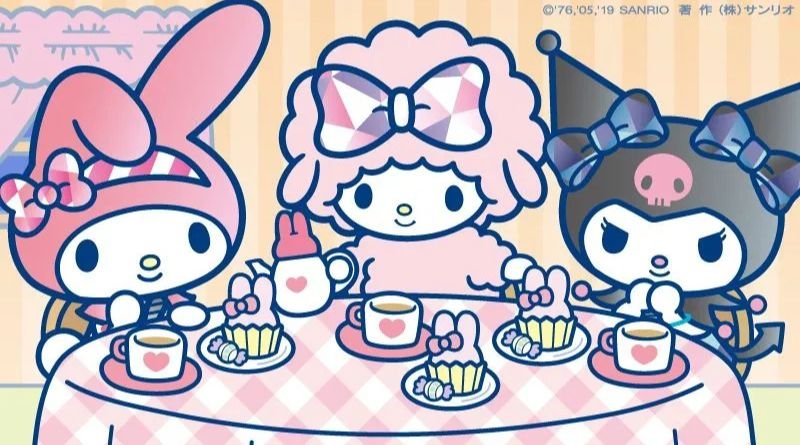In the ever-evolving world of art, there’s one trend that has consistently captured hearts worldwide: the world of “cute” or “kawaii” art. Known for its whimsical themes, bright colors, and lovable characters, cute art taps into our love for innocence and positivity. This style, often characterized by playful forms and vibrant palettes, has evolved to become an essential part of pop culture and digital media. Here, we delve into what makes cute art so captivating, its roots, and the ways it continues to evolve in modern times.
What Defines “Cute Art”?
Cute art isn’t just about colorful cartoons or fluffy animals—it’s a style that evokes emotions of happiness, nostalgia, and kindness. This genre often includes simplified, rounded shapes, large eyes, and expressive faces that convey friendliness and warmth. Cute art tends to focus on themes that are universally relatable, like friendship, nature, and peaceful living, all communicated through an artistic lens that is comforting and accessible.
Key Elements of Cute Art
- Simple and Soft Lines: Cute art is marked by clean lines and minimal detailing, making characters appear gentle and approachable. Rounded shapes are commonly used to soften the look, creating a cozy and friendly feel.
- Bright Colors: Color is a huge part of what makes cute art stand out. Bright and pastel colors create a cheerful tone that appeals to viewers. This palette is chosen to convey joy and a sense of playfulness.
- Exaggerated Features: One of the trademarks of cute art is the use of exaggerated features, like big eyes, tiny noses, and rounded cheeks. These features emphasize expressions and emotions, making characters more relatable and endearing.
- Whimsical and Imaginative Themes: From animals dressed as chefs to objects like coffee mugs with smiles, cute art lets the imagination run free, turning ordinary things into delightful characters.
- Inspiration from Kawaii Culture: Originating in Japan, kawaii culture—meaning “cute” in Japanese—has heavily influenced this art style. Artists around the world draw inspiration from Japanese characters like Hello Kitty, Rilakkuma, and Pokémon, which embody the charm and friendliness central to kawaii art.
Why is Cute Art So Popular?
Cute art has a unique way of connecting with people across cultures and ages. Here are some reasons why this style resonates with so many:
- Emotional Appeal: Cute art brings a sense of comfort and joy. It offers a lighthearted break from reality and uplifts moods, making it especially appealing in stressful times.
- Relatability and Universality: Characters and objects in cute art are often depicted in familiar situations, like enjoying a cup of tea or playing with friends. These simple scenarios evoke a sense of nostalgia and relatability, drawing in viewers of all ages.
- Accessibility in Digital Media: Cute art translates well to digital media, from social media stickers and emojis to web comics and mobile wallpapers. Many people enjoy cute art for its ability to brighten up digital spaces and make everyday interactions more fun.
Frequently Asked Questions (FAQs) About Cute Art
1. What materials are commonly used in cute art?
Cute art can be created with various media, from digital platforms to traditional materials like colored pencils and markers. Digital illustrations are especially popular as they allow artists to experiment with vibrant colors and textures easily.
2. Is cute art only for children?
Not at all! While the themes may appear simple, cute art is enjoyed by people of all ages. Many adults appreciate it for its nostalgic value, soothing visuals, and ability to convey positive emotions.
3. How does Japanese kawaii culture influence cute art?
Kawaii culture, which celebrates cuteness, has shaped the core elements of cute art. Japanese media and characters like Sanrio’s Hello Kitty and Studio Ghibli’s Totoro have set a high standard for cuteness that inspires artists worldwide.
4. Can I learn to create cute art?
Absolutely! Cute art is one of the most accessible art forms to start with because it relies on simple shapes and clean lines. There are many online tutorials and courses for beginners looking to get into the style.
5. What are some popular themes in cute art?
Common themes include animals, nature, everyday objects given friendly faces, food items, and scenes of friendship or relaxation. These themes are often chosen for their ability to convey warmth, positivity, and charm.
Conclusion
Cute art is much more than just a visual style; it’s a celebration of joy, imagination, and kindness. As an artistic trend that has evolved globally, it speaks to our innate appreciation for beauty and innocence. Whether used in personal creations, social media, or merchandise, cute art continues to make people smile and adds a touch of whimsy to daily life. From its roots in kawaii culture to its role in today’s digital world, cute art remains a beloved form of creative expression that spreads positivity everywhere it goes.
